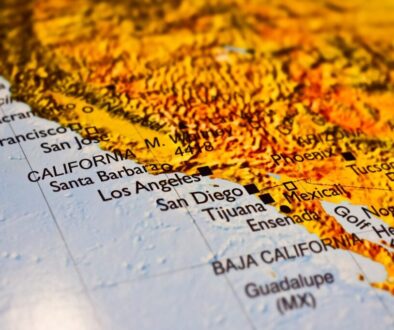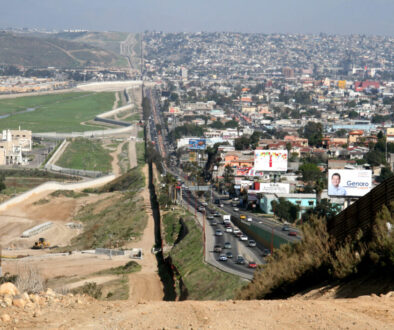The Effects of the North American Free Trade Agreement (NAFTA) on Mexico
The NAFTA was implemented in 1994
While much of the recent discussions examining the positives and negatives related to NAFTA focus on the United States, it is also important to examine the effects of the North American Free Trade Agreement on Mexico.
The NAFTA came online in 1994 as a result of an intensive period of negotiations between the three signatory nations to the accord (Mexico, United States, and Canada). During the discussions that were engaged in before the time of the treaty’s implementation, the Mexico’s citizenry was told that the effects of the North American Free Trade Agreement on Mexico would include greater economic growth and increased prosperity, and, thus, more opportunities for the nation’s working class. Now, 23 years since the signing of the NAFTA into law by the three partners, results, from the perspective of Mexico, have been mixed.
The central purpose of the NAFTA was to eliminate all tariffs on trade conducted between the US, Mexico, and Canada. After a ten-year period, all such tariffs were removed from traded goods. From a broad-based point of view, considering the quantity of trade between the US, Canada, and Mexico, NAFTA has been successful. The commercial interaction between the North American partners has increased by 400% since 1994. From the Mexican standpoint, the agreement created one of the world’s most open economies. Prior to the agreement is was among the world’s most closed. With the opening of the Mexican economy came both the positive and negative.
The Effects of the North American Free Trade Agreement on Mexico from the Point of View of the Automotive Industry
Seen from a manufacturing perspective the effects of the NAFTA on Mexico can, for the most part, be viewed in a positive light. After the ratification of the treaty, many foreign firms in the manufacturing sector initiated operations within the nation’s borders. As a consequence of this, manufactured goods for export, as a percentage of the Mexico’s GDP, increased from 8.56 % in 1993 to 36.95% in 2013. Although the North American Free Trade Agreement is cited as the cause for the loss of 44,000 domestic manufacturing jobs in the United States since its beginnings, the nation has added in excess of 500,000+ jobs due to the influx of significant foreign capital. Despite the gain in manufacturing jobs, salaries of direct labor factory workers have been almost the same since 1994, although upper and middle management posts which were once filled mostly by foreigners are now held by Mexican citizens. The wages of this type of worker are almost the same for comparable jobs in the United States. In 2016, the motor vehicle sector accounted for 3.1& of Mexico’s GDP.
Although growth of the macroeconomy has run at only a mediocre t average of 2% annual growth since the implementation of the NAFTA, one area that clearly gained in size and importance since 1994 is the motor vehicle industry. Mexico has enjoyed an inflow of large foreign investments by global automotive producers and has taken the place of being the fourth largest exporter of automobiles in the world. Only Germany, South Korea, and Japan send more units to external consumers.
The Effects of the North American Free Trade Agreement on Mexico: A View from the Agricultural Sector
Although, on the balance, NAFTA has been a gain for the export productive sector of the economy, the effect of North American Free Trade Agreement on Mexico has been less than positive in other respects. The most evident example of this can be found in the condition of the rural portion of the nation’s economy. As levies were reduced and eliminated on products grown on Mexican farms, the United States was able to send an increasingly larger portion of its agricultural goods across the border to its neighbor to the south. It is estimated that almost two million small farmers left the countryside as a result. Mexican growers of maize, in particular, were negatively affected by lower-priced imports from the US. While most of these rural agricultural workers were forced to join the non-formal sector of Mexico’s economy, a large number made the decision to migrate to the United States in search of work on American farms. In addition to this, because the details of the North American Free Trade Agreement made it easier to sell land, at present sizable multinational firms such as Lala, Sigma, Maseca, Bimbo, Cargill, Nestle, Monsanto, Bachoco, PilgrimsPride, Tyson and others control the bulk of Mexico’s cultivatable lands. This concentration of ownership by large farming interests also played a significant role in the mass departure of farmers from the rural countryside.
In general terms, the average Mexican believes the NAFTA has complied with the promises made by those leaders that ratified the accord more than two decades ago. As a member of the North American trading bloc, the economy of Mexico in its entirety has not expanded at the rate that was anticipated. Although certain manufacturing industries such as the auto sector, have made significant gains since the signing NAFTA, others, such as Mexican agriculture, have been negatively impacted by inexpensive imported products sent by the US. While, in general terms, it might be possible to say that, Mexico’s industrial North has benefited from the NAFTA, it’s rural south has been left behind.





